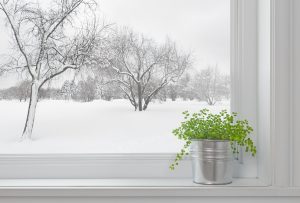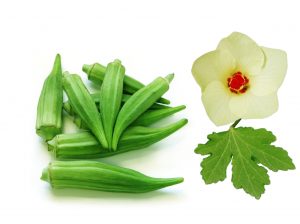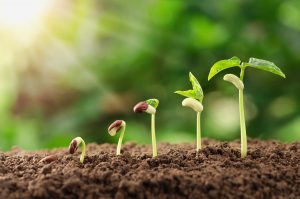
“One of the most delightful things about a garden is the anticipation it provides”
-W.E. Johns
Looking out my window on snow covered ground, sipping a cup of Ginger Peach Chocolate Truffle tea, with a stack of gardening catalogs on my lap…I think, what more could I want from a cozy afternoon. The vibrant pictures of a multitude of plants lure me into thinking I should enlarge my garden space. Gone are the thoughts of not planting a garden next season at all.
For the last few years at the end of each growing season, I swear I am too old to do another year of slinging soil, carrying about large containers of said soil, and figuring out how to get up from weeding after I am finished. Those thoughts mostly last until the garden catalogs start giving me other ideas.
What about the seeds carefully harvested and stored? What about the pure pleasure of being out in the sun and away from the worries of the world for a period of time? What about the bees happily going about pollinating the plants? What about the smile that comes from seeing seeds sprout?
Herein is my conundrum…I love all that and more from growing a garden. I would miss it greatly and feel lost without that part of me that gravitates to gardening. So I sip my tea, and flip through page after page of plants, seeds, containers, fertilizers…and plan Garden 53 Season 2022.
It is said if you tend a garden, it will tend you. I find that a perfect truism. No matter how worried I am about personal or worldly troubles, going out into my garden soothes and heals my heavy heart and weary soul. I will say too, that I add to my knee brace collection and stores of arthritis creams
Two other quotes I’ve read are; “all that is needed to start a garden is good intentions and earth” and “there is no wrong way to plan a garden”. These two should come with addendums. True, you need good intentions, but soil is whole other matter. And you can’t willy nilly pluck down a plant or seed and expect it to grow and produce. Each plant or seed has to be considered for what it needs are. Shade, part shade, sun, full sun, lots of water, little water, etc. etc. etc.
I will ruminate these variants in other musings as I plan my garden for 2022. The one thing I do know, is that it makes me happy just to look at the catalogs and anticipate how my garden will come together.
“All the flowers of tomorrows, are in the seeds of today”
-Indian Proverb


“A garden is not a place. It is a journey”.
-Monty Don
Growing okra for me is accurately called a journey. Once the plants are grown and finished producing pods for eating, my thoughts go to drying a few pods for crafts. So from seedling to dried pod, the tour is long.
I mostly plant okra for my friend who is an okra aficionado…she just loves the stuff! I personally like to get my green veggies in ANY other form. My thoughts center on dried okra pods, and what decorations I can make from them. You will find in the Crafting Musing #1 my designs on decorating dried okra pods. First, one needs to grow the okra plants.
Traditionally a southern plant, okra thrives in warm weather. It needs full sun and likes loamy and slightly acidic soil. Adequate water is important to support growing okra plants. Last season I grew two types of okra…Cow Horn Okra and Louisiana Green Velvet Okra. Cow Horn okra is slightly larger than other okras and mostly spineless, but are very good producers.
I start the seeds inside under 100 watt LED Daylight bulbs about a month before I plan to set them out in their place in the garden. Usually around May 1st for an early June planting. When my inside seedlings are about 3-4 inches tall, and the outside soil temperature remains steady at about 60 degrees, it’s time to plant them in their outside pots. I use organic potting soil and add a bit of perlite to the mix to aerate the soil and add a bit of water retention.
I don’t have a lot of space for my garden that doesn’t have a zillion old tree roots that make it very difficult to plow and grow plants in. So I had a bright idea to put down heavy grass green tarps over the soil and grow everything in big pots. The effect was great! The tarps gave the impression of ‘grass’ and there were NO weeds to deal with in the area that had the tarps! I just hose it off when watering my plants and I am a happy gardener.
You know when the okra is ready to set pods when you see a lovely flower start to bloom. The bloom only last a day, but are very beautiful. When the flower falls off you see the young okra pod starting to grow. When the pod is about 2-3 inches long, you can harvest the pod for eating. Smaller okra pods (I am told) are tender, larger pods less so.
During the growing season I fertilize every 3-4 weeks with a 10-10-10 fertilizer. This is a more frequent schedule than for okra planted in the ground. Worm castings are added to soil few times during the season too. When fertilizing plants that are grown in pots, it’s a good idea to irrigate the soil first, then add the fertilizer the next day. Fertilizer salts can build up inside the container and unbalance the equilibrium of the soil. Feeding plants is a good thing, too much can defeat the purpose.
Okra plants take about two months to produce edible pods once seedlings are planted in the garden, Depending on where you live, factor in the time it takes to start the seedlings inside. I believe planting seasons have changed due to climate change. It is not always possible to plant outside with regards to temperature. Last season I planted early in May, with temperatures mainly reliable. But a few weeks later I was putting ‘coats’ on my plants because the temperature dropped dramatically. Many plants didn’t make it. It just got too cold. Next season I promised myself I wouldn’t be so hasty, and I would actually wait for long periods of steady weather. This approach saves many plants from dying, but also makes it a finger crossing time to see if the weather holds in the fall so plants have the needed length of time before harvesting. I think fortitude and ingenuity is needed for growing a garden these days with all the temperature variations.
Nonetheless, I would not give up gardening for any reason. It brings joy to my life that is welcome given the effort it takes to live in an unusual environment infused with a tiny organism we cannot see, but brings so much disruption to our daily lives.
“To plant a garden is to believe in tomorrow”.
-Audrey Hepburn


“To see things in a seed, that is genius”.
-Lao Tzu
Ever since I started gardening, for me the seed itself has been a symbol of imagination. When I came across Lao Tzu’s quote, I could not have agreed more. Seeds are extraordinarily intelligent and powered with creative activity. From the sprouting of a miniscule tomato seed, to eventually ending up in my salad, I imagine a wondrous journey has been followed and completed.
Each spring I give up part of my small living room to create a space to sprout seeds. Not only am I excited when each seed sprouts, I revel in the knowledge that these small sprouts will gain me a fall harvest. Aside from the emotional joy of sprouting seeds, it is helpful to be aware of the complex science behind the chemical and molecular changes in the seed. You don’t have to be a master gardener, but having at least a basic understanding of the process of germination and subsequent growth can help with gardening success. Realizing the basic principle of how seeds grow can help you provide them with the basic essentials for a good start.
Each seed contains necessary components to produce a plant. I have read that in actuality, each seed contains a tiny embryonic plant quite well formed on a microscopic scale. The seed contains all the food needed for the first spurt of growth. It is up to the gardener to add nutrients as the seed growth progresses. Getting the right conditions is not very hard, given attention to detail and variations for a particular seed.
Seed germination depends on temperature, moisture, air, and light. Sounds simple right? Well, it is in general, but too much or too little of each element can result in disappointment. Doing a bit of research on the type of seed being planted allows for better maintenance. Seeds having a hard outer coating need to be soaked in water before putting in soil. Some seeds need to be planted deeply, while other seeds require being planted just under surface soil. Reading the back of seed packets can help identify these particulars.
Taproot depth is another consideration. The taproot is the primary root system of the plant, growing vertically downward; other smaller roots will be formed horizontally. For example, sunflowers have a long taproot, and do not really do well started inside. They need to be planted about two inches deep right into the soil so the taproot has plenty of room to travel. Lemon grass seeds are small, do not have a very long taproot, but need lots of light to germinate. They prefer being laid on the base soil, with a thin layer of soil sprinkled on top.
To give some idea of the importance of seeds to the human race, there is a place in Norway called the Svalbard Seed Vault. It is a secure backup facility for the world’s crop diversity of seeds. The Seed Vault provides long-term storage of duplicates of seeds conserved in specialized conditions. This provides for the security of the world’s food supply against natural disasters, wars, equipment failures, sabotage, and disease. The Seed Vault’s mission is to provide backup against loss of seeds in other storage areas in the world. It would be a wonderful place to see. Its importance cannot be understated, for without seeds, there would be no food, flowers, herbs, trees…and for me the joy of having a garden.
“All the flowers of all the tomorrow’s are in the seeds of today”.
-Proverb


“To see things in a seed, that is genius”.
-Lao Tzu
Now, in early January, I inspect last seasons harvested and stored seed packets in my fruit drawer and see new spring blooms, hopeful thoughts, and other magical beginnings. Contentment is found in the knowledge seeds collected from each plant this past season ensures their essence will be brought to life again in a new generation of gardening experiences. Future juicy and sweet Bumble Bee tomatoes, larger than store bought okra, fragrant sweet basil, the cosmos flowers my groundhog loves. Enjoyable too, are antics of my backyard critters gathering last minute snacks they buried in my planters before they get banned from the garden for the growing season. They all make me smile. So many good events and more from a little gift that is the seed.
Much discussion can be found on exactly the best method to collect and store seeds. Finding most of the techniques tedious and time consuming, I keep it simple. Let the seeds pods dry fully on the vine, collect them off the vine when very dry and crumble in your hand, label a small white envelope and put envelopes in the fruit crisper till next year. Done.
Home plot gardeners benefit by saving their own seeds both in money spent on new packages of seeds and getting an early start on future seedlings. I like to start my tomato seeds inside by mid-February to be hardened off at the beginning of April. The weather in spring can be moody – so after much experimenting with seedling protective measures – I encase young seedlings in shielding enclosures of winter window shield material. Keeps the cold out and lets the sun in. Moisture stays relatively stable, and critters can’t dig them up. It’s a win-win.
On a global view seed saving is vitally important to the continuation of the world’s food supply. Speckled all over the world are environmentally contained seed vaults protecting many thousands of varieties of seeds. The largest and most famous is the Svalbard Global Seed Vault in Norway. A fascinating story to read about. Countries from all over the world submit various seeds to the vault for safe keeping in case their respective areas incur catastrophic events that harm their own seed supply. Climate environments factor in the immense need for saving extra seeds. The journey a seed travels from sprout to harvested seed is long and complex. Newly planted seedlings prosper best in a temperate and stable environment. With vastly changing weather patterns many seedlings can die and need replanting. It cannot be overstated how very bad a situation would occur in the event the world ran out of seeds.
Historical events recount the importance of gardens, harvesting and saving seeds. Shortly after the United States entered World War II the US Secretary of Agriculture began speaking of victory gardens. Wars produce chaos, not vegetables. People were encouraged to start gardens big and small to help prevent a food shortage. Foods home grown would support the war effort by reducing the load for commercial growing, packaging supplies, and hauling as supply lines became disrupted.
A community victory garden could support many families within that circle with any surplus being offered to the war effort. The concept found so much favor that eventually victory gardens were able to provide food to the troops all around the world. This wonderous feat began and progressed to victory from a seed.
While my small garden didn’t start out to contribute to global feeding it enjoyed a triumph nonetheless by providing a beautiful and healing environment for me, my buildings ‘humans’, homes and nutrients for all critters living on the land and being environmentally friendly to bees. A garden’s presence by its very nature circles out both positive feelings to the environment -most people think blooms are pretty -and physical benefits to those sharing the harvest – people really enjoy having food to eat!
“Seeds in your hands are tomorrow’s food.“
Indian Proverb